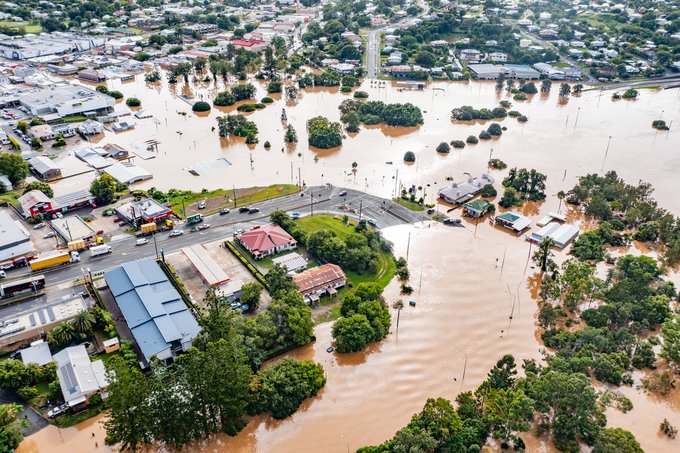
Flood Insurance
With the recent floods there’s been a lot of talk about Flood Insurance.
Water, whether caused by a flooding river, burst water pipe or storm, can cause extensive damage to your home, contents and other assets.
It’s important to understand the different types of flood and other water-related events and how they may be covered under your insurance policies.
Flood insurance is often built into a range of insurance policies, including home and contents, strata title, motor vehicle and business insurance policies.
The risk of a flood occurring is reflected in the cost of the premium – property owners with a high risk of flood will pay a higher premium than other property owners.
Insurers treat flood in different ways in their policies:
- Many insurers include flood cover as a compulsory part of taking out a household policy
- Some insurers include flood as a standard inclusion, but allow the policyholder to remove it– this is known as opt-out flood cover
- Some insurers will cover flood in policies only up to very low defined values – for instance, damage of $15,000 or less
- Some insurers will not cover flood under any circumstances
Flood definition
Australian regulations include a standard definition of flood, which was introduced in June 2012.
It applies to home and contents, small business and domestic strata-title policies.
The standard definition of flood in Australia is:
The covering of normally dry land by water that has escaped or been released from the normal confines of:
- any lake, or any river, creek or other natural watercourse, whether or not altered or modified; or
- any reservoir, canal, or dam.
Even if your policy excludes flood damage, your policy may still cover you for events such as storm damage or rainwater damage. Storm or rainwater cover in your insurance policy may cover the situation where your house becomes inundated by rainwater that has fallen naturally from the sky. Though most insurers regard rainwater runoff as part of storm cover, some insurers won’t cover rainwater runoff or storm surge when the customer chooses not to take flood cover. These options are explained in the product disclosure statement for your policy.
Check your policy wording and talk to your insurer or insurance broker if you do not understand what you are covered for.
Other forms of insurance may have different ways of describing flood risks.
Flood Insurance: Determining if your policy covers floods
When choosing or renewing your policy, make sure you understand your flood risk.
Check your policy wording carefully before buying your policy and make sure you understand whether your policy includes flood damage and what type of flood damage is included. If you are not sure, speak to your insurer.
If you are at risk of flood damage, carefully review the terms and conditions of your cover (in particular, your home and contents insurance policies) by reading your Policy Disclosure Statement. Restrictions on what your policy will and won’t cover are usually listed as exclusions.
The cost of cover is typically proportional to the risk of flooding in your location and the value of the assets you seek to protect. If in doubt, contact your insurer or insurance broker to clarify the extent of cover held and your insurance needs.
Though most insurers regard rainwater runoff as part of storm cover, some insurers won’t cover rainwater runoff or storm surge when the customer chooses not to take flood cover. These options are explained in the product disclosure statement for your policy.
Flood risk
Most properties in Australia have little or no flood risk. Insurers believe only about 2.8 per cent of properties have moderate to extreme risks of flooding, and about 7 per cent have some exposure.
About 80 per cent of insurance losses from floods occur in areas that have been flooded in the past.
Governments are responsible for assessing and mapping the flood risk to communities. They use this for infrastructure and town planning, and for working out how they can lower the risk of flood for existing communities.
Flood maps can be influenced by the number of different factors including building development, road works, new agricultural growth, changes to river and creek catchments, as well as changes to drainage and sewer arrangements for your area.
Unfortunately, many parts of Australia that have flood risks lack adequate flood data or have outdated flood maps. Most jurisdictions are working hard to improve the accuracy and availability of their flood information.
How do insurers determine the flood risk to your property?
In partnership with state and territory governments, the general insurance industry has developed and licensed the National Flood Information Database (NFID) for use by insurers in determining the flood risk to individual properties.
NFID is an address database containing 11.3 million property addresses, overlayed with the known flood risk according to government flood mapping. Commercial licensing arrangements between many governments and the specialist flood risk experts who prepare the flood maps means it is not a public database.
Most insurers use NFID to determine the flood risk to individual properties, and calculate the premium based on this risk and other criteria including building type, location and claims history.
However, it is up to individual insurers to decide what criteria they use to determine flood risk. They may examine information from many sources to identify properties that are prone to flooding. These may include local government flood mapping, historical flood information, terrain data and insurance claims information.
Insurers assess how often a property is expected to flood, how severe the flooding may be, and how deep the flood can get.
It’s important to understand that insurers can’t reduce the impact of a flood.
It is up to governments to reduce the risk of flood to communities through investing in permanent physical mitigation measures, such as levees and flood barrages.
Article courtesy of Understand Insurance > https://understandinsurance.com.au/types-of-insurance/flood-insurance
To talk to us about Flood Insurance for your business or property, contact us here


